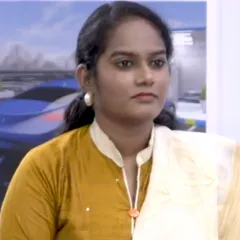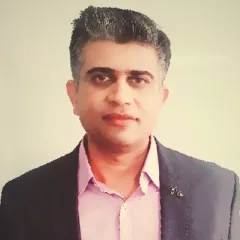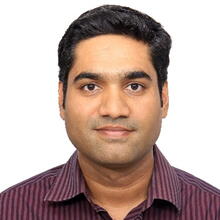
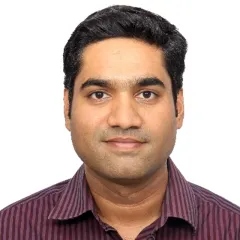
Mr. Sridhar LINGAN has been with Mahindra & Mahindra since March 2011, currently working as Principal Engineer, Heading Crash & Occupant Simulations, CFD & Methods Development group in Product Development for Auto and Farm sectors at Mahindra Research Valley, Chennai.
Prior to Mahindra, he has worked with Tata Motors and Mercedes Benz in Passenger Car product development for Structural Crash & Safety.
He holds a master’s degree in Mechanical Engineering with from NIT Trichy and has an extensive product development experience of about 18 years in vehicle structure development. His area of expertise is in Architecture and Structural development for passenger vehicles.
He has published & presented many technical papers in national & international conferences and has 2 Indian patents to his credits.
Presentation Title 1: Simulation Driven Agile Electric Vehicle Development
Presentation Title 2: Empowering the Electric Vehicle Revolution with Simulation

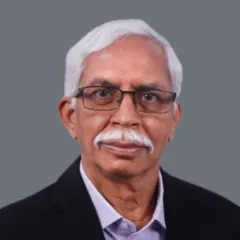
Jayaraman SIVAKUMAR (Siva), an alumnus of the College of Engineering, Guindy, Madras, Tamil Nadu, India, received his PhD in Structural Mechanics from the Texas Tech University and thereafter started working at General Motors, Flint, Michigan, USA. He is currently Director, Global Product Engineering at GM Technical Center, Bangalore, India. With a career spanning over 35 years, Siva has held various positions at GM in technical & managerial capacities. Siva has guided many key technical decisions for future products related to engine design, analysis and design processes, and production issues, for GM engines. He has a Patent, Records of Inventions, and has several prestigious awards at GM, besides authoring several papers. Siva loves soccer and enjoys traveling.
Panel Discussion: Empowering the Electric Vehicle Revolution with Simulation
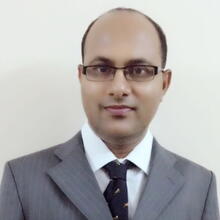

Mr. Akhilesh Kumar JHA presently working as a senior scientist at Aeronautical Development establishment in the field of UAV Design and Development. He has done BTech from NIT Jamshedpur in mechanical engineering & MTech from IIT MUMBAI in aerospace structure.
He has worked in the field of Airframe design, control surface design & development, landing gear design & development, fuel tank design and developments, and digital mockup generation for MALE UAV.
He has also worked as a system engineer for Imported and indigenous payloads.
He has published more than 20 papers in different national, international conferences, seminars,
and journals. He has been also awarded the lab scientist award for the year 2016.
He is a member of the Aeronautical Society of India as well as the Indian Society for Advancement
of Materials and Process.
On Part Consolidation and Reverse Shape Morphing to Manufacture Topology Optimized Aerospace Structures Additively
Modern-day aerospace structures are subjected to complex static and dynamic loading patterns. The critical requirement of sustaining the allowable stresses and strains must be met with very tight weight constraints. However, the condition of lightweight designs often leads to a high level of geometrical complexity, making it challenging to realize through conventional manufacturing methods. The parts fabricated through traditional manufacturing methods, such as casting, rolling, forging, and machining, are limited to some standard geometries and shapes. The manufacturing process also considers how different parts will be assembled and joined. This includes threaded fasteners, non-removable riveting, bonding using adhesives/brazing, and permanent joining through welding. Moreover, parts manufactured through traditional methods are subjected to inhomogeneous stress distribution. Consequently, using continuous material to fabricate such a structure would lead to overdesigning, leaving scope to make the part more efficient by selectively removing material from relatively less stressed regions.
This sets the way for topology optimization technique with which optimized material distribution is achieved within a given design space satisfying a minimization or maximization objective such as mass, stiffness, and frequency, subject to certain constraints such as stress deformation. The topology optimized metallic parts can be additively manufactured through the laser powder bed fabrication method to produce complex shapes with reduced design and build time, on-demand manufacturing, instant assemblies, part consolidation, easy model changes, part customization, freedom of creation. It increased the buy-to-fly ratio with less material wastage. However, the high-temperature gradients induced by laser melting render residual stresses that may lead to thermal distortions. If not checked, the thermal distortions may result in tolerance errors, support structure failure, interlayer delamination, part-recoater interference, voids, and improper fusion. Several techniques have been suggested to mitigate the effect of thermal distortions, such as laser scanning paths having shorter deposition passes, preheating of the substrate, and localized preheating of the deposition region. However, these methods are time-consuming and are limited to small parts requiring modification in the laser deposition system. Further, the numerical modeling of additive manufacturing to find the ideal set of processing parameters is limited to small part volumes, focuses on individual printed layers, and is computationally expensive for full-scale part modeling. Hence, a technique is required with which the thermal distortions can be minimized without any modifications in the manufacturing system or equipment and is also applicable to industrial scale components.
To this end, the present study illustrates the replacement of a sub-assembly of two brackets with a single topology optimized component. The topology optimized part thus eliminates the need for fasteners to join both the brackets, thereby making the design more straightforward yet effective. The final topology optimized part weighs only 278 g, i.e., 69% lighter than the 909 g original design, yet meets the design constraints. A maximum displacement of 0.19 mm near the point of applied load is within the upper limit of 0.24 mm in the original design. Also, the maximum stress in the optimized topology part is 52 MPa which is 35% less than the 80 MPa in the original design. Moreover, homogeneous stress distribution in the optimized region allows for efficient material utilization.
The topology optimized part is then virtually printed through powder bed fabrication technique. Proper part orientation and support structure are chosen by assigning priority levels to various selection parameters. Virtual printing is then carried out using the laser powder bed fabrication method by sequentially coupled thermo-mechanical simulations. Because of the inherent nature of this technique, thermal distortions occur in the printed part. The reverse shape morphing technique is used to compensate for the predicted part distortions by scaling the dimensions of the original piece by negative ones. The approach helps in reducing the thermal distortions in the printed part by at least ten times. Therefore, the reverse shape morphing technique proves to be an efficient way to overcome the thermal distortions during additive manufacturing and get the desired shape per requirement. Hence, using topology optimization coupled with reverse shape morphing technique, simple, lightweight, and efficient designs can be additively manufactured to serve the critical needs of the aircraft industry.
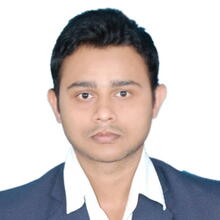
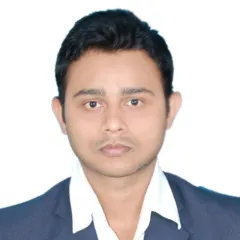
Rudesh has almost six years of experience in Dassault Systèmes. He has expertise in Additive Manufacturing Simulation, topology optimization Thermal, Structural, and Vibration Analysis. He is responsible for collaborating with Strategic Planning, R&D, Marketing & Sales team and developing industry workflows with customer review.
He was the owner o the SIMULIA Additive Manufacturing course on 3DEXPERIENCE Edu for the last five years. He was also responsible for developing new simulation experiences for virtual reality and augmented reality platforms. He has also created the SIMULIA Additive Manufacturing series on SIMULIA YouTube Channel. He was also responsible for creating technical Video Series on SIMULIA YouTube Channel.
He received his bachelor’s in engineering in Mechanical from MIT, Aurangabad & his master’s in engineering in Mechanical Design from Savitribai Phule Pune University.
Currently, He is the Part of the SIMULIA Strategic Manufacturing and Materials Initiative. He handles conventional manufacturing processes such as forming, casting, and Heat treatment simulation. In addition, he is working on Advanced Simulations such as Precision Glass Molding
Accelerating Additive Manufacturing Through Simulation
Dassault Systèmes has offered an advanced additive manufacturing (AM) simulation for some time now; and while the simulation itself may not be brand-new, it is the uninterrupted digital thread on the 3DEXPERIENCE platform that actually accelerates the AM development process. The current presentation demonstrates how the integration of tools for and around additive manufacturing actually helps to tackle the oftentimes tedious and time-consuming process of driving the development of a product all the way from idea and design to final product. This is achieved by illustrating how the AM product development process on the 3DEXPERIENCE platform compares to a development process using individual tools and programs.
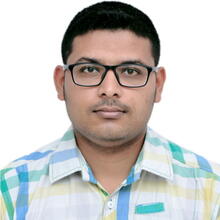

Puneeth has a master’s in Machine Design with more than ten years of experience in the Aero-engine domain. He has worked in GTRE, GE, SAFRAN.
Design and Analysis of Asymmetric Gear Pairs Using Abaqus and Python
Superior performing gear drives need the hour for enhanced endurance to transmit loads at high operation speed. Also, at the same time, it should cost less and have an extensive operation lifecycle. In some cases, like automobile drives, Jet-Engine gearbox, wind turbines drive, etc., the Loading is uni-directional. This influenced the evolution of Asymmetric gear teeth where the drive side is not symmetric with the coast side. This study evaluates the contact stresses of an asymmetric spur gear-pair, where the drive side pressure angle is modified. A novel boundary condition method for Contact analysis is evoked to achieve continuous teeth contact. Abaqus was utilized to numerically solve the spur gear pairs in contact and determine the stresses developed at the contact region. FEA results obtained were correlated with standard analytical approaches like Hertz contact theory and AGMA methods. Python scripting was implemented in conjunction with Abaqus to automate the design & computational process. The numerical analysis evaluated the contact stress regime under continuous contact conditions along the Line of action. The simulation results indicate that the stress distribution of the gear surface is governed by an alteration of the tooth pressure angle.
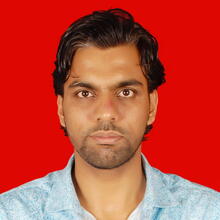

Prashant has almost eleven years of experience in MAHINDRA & MAHINDRA [EVTech]. Before this, he worked in other companies like Delphi and Robert Bosch. He has expertise in Battery Pack development for EV, Inverter / Converter / Motor Structural Vibration Instrumentation for vibration measurement (LabView and National Instruments). Currently, he is the module lead for Battery Pack Design 350V System. Additionally, he has eight publications in international journals & sixteen peer-reviewed international conferences to his credit in active vibration control and structural health monitoring https://www.researchgate.net/profile/PrashantTripathi16/publications.
He received his bachelor’s in engineering in Mechanical from Visvesvaraya Technology University & his master’s in technology in Mechatronics from the National Institute of Technology, Karnataka, specializing in Passive and Active Vibration control.
Accelerated Design Verification of EV Battery Pack Sealing Solution Using Abaqus
Rechargeable Energy Storage Systems, the viability of electrically powered propulsion in passenger vehicles, light trucks, and multipurpose vehicles in the automotive industry, have greatly improved safety. The energy storage components in the Electric Vehicle should meet several requirements as per global standards. This mandatory national standard requires that all traction batteries of electric vehicles in the Chinese market pass the immersion test. One of the biggest challenges is to meet the IPX7 ISO 20653 and ISO 6469 with large enclosures. The seal on RESS is an essential component to be selected to avoid short circuits thermal runaway due to water ingress. Different Sealing methods are available for enclosers like Formed in Place Gasket, Silicon Closed Cell Foam, Liquid, and EPDM rubber Sealing. Sealing solutions are a function of several design considerations such as serviceability, assembly, cost, and design stiffness of enclosures.
In the whole working process, contact states of seals are very complicated, and they change over vehicle life. It is essential to accurately find separate positions and contact positions to study the leaking on RESS. Many applications that employ these materials subject them to a sizeable nonlinear strain. Therefore, the simple Hooke’s law is not sufficient to describe their material behavior. This paper presents an approach to obtain material properties of foams under compression loading through experimental tests and using them in finite element modeling.
The foam sealing solution is virtually tested using Abaqus. Its sealing effectiveness is based on foam properties, enclosure stiffness at the sealing area, and design pitch for fasteners on the flange. Information such as deformed configuration and the contact pressure is obtained in the analyses. Results show that silicon closed-cell foam has a good seal performance when proper pitch optimization is done on the enclosure to reduce the number of fasteners concerning the packaging. Simulation results in Abaqus have shown a good correlation with biological validation data.
Co-author: Chockappan NEETHIPATHI and Rajkiran KULKARNI


Lakshmanan CHETTIAR, CAE Engineer, has two years of experience in research and development. He is currently working in Stryker Design Engineer CAE. He has completed his Master in Thermal Engineer from Thapar Institute of Technology.
Finite Element Modeling of Anatomical Tracking Using a Centerline Technique
Navigating through anatomy has several applications in healthcare and medical device applications. A 3D path navigation was presented for an endoscopy application to track the trajectories inside tubular anatomical objects with minimal user interaction. Navigating through the path in 3D models is critical, and accurate anatomical knowledge is needed to obtain a suitable trajectory.
The present work has developed an improved navigating methodology that uses an advanced tracking updating scheme. The centerlines calculated using Vascular Modelling Tool Kit - VMTK are based on the Voronoi diagram of the complex geometry, which ensures that the centerlines extracted are continuous and accurate concerning cross-section. A finite element-based method is used to traverse along with the complicated geometry. The simulation is performed using Abaqus 2019. The extracted centerlines will enable us to calculate the boundary condition to traverse the tracking device inside the tortuous or complex path.
In this algorithm, the navigating device was discretized into different node sets used to calculate the center node, which serves as a master node for the kinematic coupling of node sets. This kinematic coupling ensures that the rigid body motion of the master node translates all its degree of the freedom movement to the coupled node sets. The displacement boundary condition was applied at these master nodes to traverse the tracking device through the tortuous or complex path extracted from Vascular Modelling Tool Kit - VMTK.
This will help traverse through a calculated path and reach the region of interest (ROI) with utmost accuracy. The navigating algorithm yielded high reproducibility rates robustness to different noise levels associated with the simplicity of execution, demonstrating our approach’s feasibility. The developed algorithm has the potential use to deploy the implants in the treatment of vascular diseases imaging applications with greater accuracy. The algorithm developed in this work will also act as a predictive planning tool and help the surgeons to optimize the intervention procedure.
Co-author: Sreekanth PADMANABHAN, Raja JAYENDIRAN & Venkateswaran PERUMAL
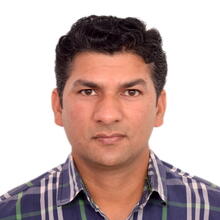

Avadhesh Meena is Manager and has more than nine years of experience in Automotive Engineering Simulation. He has done B.E. in Mechanical Engineering from Govt. Engg. College Ajmer and M.Tech. in Machine Design from IIT Delhi.
Optimize the Design of HVAC Mountings with Maximum Stiffness or with Optimum Weight Using Topology Optimization through Tosca
Automotive airconditioning is the process of removing the heat and moisture from the interior of an occupied space to improve the comfort of occupants. Heating, ventilation, and airconditioning (HVAC) is the technology of indoor and vehicular environmental comfort. Its goal is to provide thermal comfort and acceptable indoor air quality. HVAC systems can be used in both domestic and commercial environments. It is made of plastic material and fitted inside the front dash panel. To evaluate the structural integrity of the HVAC assembly under actual time conditions, component design should be robust and able to sustain internal/external load. Internal loads might be-containing vibrations due to the engine running at higher engine RPM, HVAC blower running speed at higher voltage(12V/24V), and inertia load. External loads will be due to on-road running conditions. Vibration has many undesirable and harmful effects on the life and performance of mechanical equipment and other structures. The vibration results are due to the dynamic interaction between vehicles and road, vibration transmitted from machinery to its supporting structures, thereby interfering with their performance, damage, malfunction, and failure due to dynamic loading, fatigue failure, and oscillation of transmission lines. The main objective of this work is to optimize the design of HVAC sheet metal mounting by improving the stiffness using Topology Optimization Analysis through Tosca. To improve the stiffness, enlighten the weight of the bracket in such a way that it could sustain dynamic load under resonant conditions. Improvement could be met by improving modal frequency through design improvement in mounting brackets. Further, the improved design must be verified before and after through regular mode analysis. Furthermore, we need to verify the dynamic results under dynamic load through frequency response analysis.
Keywords: HVAC (Heating, Ventilation and Air-Conditioning, HVAC Mounting Brackets, RPM(revolution per minutes), Voltage, Modal Frequency, Numerical Analysis, Verification et al
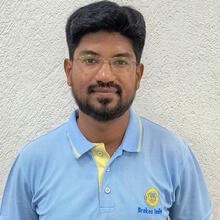

Dinesh Kumar J received his ME in Computer-Aided Design from College of Engineering, Guindy, Chennai, in 2018, and his BE in Mechanical Engineering from Karpaga Vinayaga College of Engg. & Tech. in 2012. He currently works as an assistant manager at Engineering, Research, and Development in Brakes India Pvt. Ltd, Chennai for developing CAE simulation methodology of new products in braking systems. With 9+ years of industrial experience, his expertise is in CAE validation for the automotive and heavy machinery domain.
FE METHODOLOGY TO SIMULATE CAM ROLLER’S RIDE OVER & FALL BACK PHENOMENON IN S-CAM BRAKES
S-cam brake is a drum type foundation brake used in heavy vehicles which uses compressed air as an energy medium. It consists of a S-cam, cam rollers, leading and trailing shoes, brake linings, spider plate, bracket, dust shields and return springs. Brake linings or friction pads are mounted on leading and trailing brakes shoes, which are pivoted at one end and held against the S-cam at other end by return springs. When brakes are applied, the brake chamber converts the pneumatic pressure into linear force. This brake load is then applied to the S-cam cam shaft as a torque by a slack adjuster which acts like a link. When the S-cam with an “S” profiled cam rotates, the Cam shaft torque is again converted into normal forces acting on the leading and trailing shoes through the cam rollers. These rollers are placed at the web slots provided in the brake shoes at either side of the S-cam. The load on the leading and trailing shoe makes the brake lining contact with brake drum generating brake torque thereby the vehicle slows down and stops, due to friction resistance at the drum interface It is a safety critical device, hence, thorough validation of its performances by lab test rigs and field test is essential. With proto design, an unusual noise is observed rarely during dynamic braking which is around 25% of lining worn out condition.


Ujjwal Kumar DAS pursued B.Tech in Mechanical Engineering from NIT- Durgapur and graduated in 2007. He has 15 years of experience in FEA Structural Analyses and automation. He worked in various industries, including automotive OEMs. He gained exposure to diverse product designs and FEA analysis types such as modal, simple harmonic, non-linear static, dynamic, thermal, fatigue, optimization tools, scripting, and automation. His prime interest is to provide better, cheaper CAE solutions to customers in the early design phase.
Automatic Transmission Park System Speed of Engagement Post-processing Automation
The Park System Assembly provides a means to immobilize a vehicle equipped with an automatic/Hybrid transmission or Electric Drive unit when the “Park” position is selected manually/hydraulically or by an electric motor. The immobilization of the transmission is achieved by engaging the “Park Pawl” into the “Park Gear,” which in turn grounds the output shaft and the vehicle. Being a safety device, the Park System should allow the driver to engage the shift lever into the “Park” position when the vehicle is rolling within a range of low speed. The max speed of the gear/vehicle at which the pawl can lock the gear is called the Speed of Engagement (SOE) of the gear/Vehicle. The Park System should allow the components to ratchet when the vehicle is rolling at speed above the engagement speed. When the vehicle reaches the engagement speed, the “Park Pawl” should engage the “Park Gear” and immobilize the vehicle. All this should take place without any component failure. The Abaqus/Explicit predicts the park system speed of engagement, ratcheting conditions, and actuator spring force values.
The analyst may perform DOE (Design Of Experiments) studies to optimize the park system design for SOE targets. The analyst needs to post-process many output database files (odbs) during this process. This paper describes the development of an automation script using the Abaqus scripting interface (for Python). Manually, the Speed of engagement and ratcheting conditions are determined by overlapping the gear and vehicle angular speed Vs. Time graphs. By visualizing the chart’s data points, SOE is identified where vehicle/gear speed becomes zero. In the DOE optimization process, the analyst needs to open every odb individually to extract SOE, a repetitive and cumbersome task. The conventional method is time-consuming and not robust enough to eliminate human errors or inconsistency while recording the SOE and Actuator Spring Forces from many odbs.
The above problem statement encourages the automation of post-processing activity. The post-processing activity is automated using the Abaqus scripting interface. The Abaqus plugin is developed using the AFX toolkit. As part of the development, the user needs to open the plugin and follow the steps. It automatically begins odbs one at a time, identifies the SOE and ratcheting conditions based on a predefined logic, and writes the information to a consolidated Excel worksheet. Also, win 32 modules are used in the script to generate the PowerPoint report. The automation significantly reduces the annual effort by ~94%, enabling the reduction of design cycle time. The same script can also be used in workflows of optimization tools (such as Isight). The consolidated worksheet can be used as a dataset to create a machine learning model. This will be added in the future scope.
KEYWORDS: Park system, Automotive, Abaqus, Simulation, Post-processing Automation, Scripting interface, Plugin, Python.
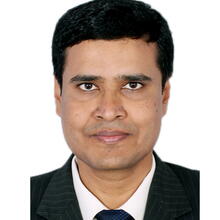
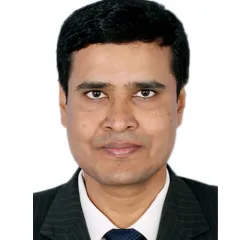
Bonala SASTRY started his career with TCS – GE Joint Venture Company EACoE, Analysis engineer in 2001. He started his career with TCS in 2003. Since then, he has been working on Virtual Validation of Powertrain and e-Powertrain components and supporting all automotive Major OEMs and Tier1s. He holds master’s degree in Structural Engineering from Indian Institute of Technology, Madras. His main focus areas include Developing Simulation workflows, Design Optimization, Fatigue and Fracture
A Comprehensive Review of Material Models of Lithium-Ion Battery Cell Used in Battery Pack Crush / Crash Simulation
Battery cell technology has been evolving rapidly in the last decade to optimize the cost per kWh and enhance the range of the electric vehicle. Still, a Lithium-ion battery is a good candidate for the electric vehicle due to its high energy or power density and operating voltage. Mechanical abuse is one of the main reasons to cause the safety of battery packs, which must be evaluated using Battery crush or EV side-impact crash simulations. The pouch and prismatic cells of a Lithium-ion battery consist of various components made of materials with different material parameters in different directions. So, there is a need for an efficient and accurate material model for the cell to represent the physical behavior of the cell in the FE simulations. Although high fidelity battery pack simulation models represent the physical behavior and correlate with test results, the main challenges of these simulations are substantial computational resources and solution time. This paper reviews various material models existing in the literature and develops a unified anisotropic material model with hill failure criterion to calculate strain, energy, and other output parameters. However, we plan to explore the feasibility of adopting a linear elastic model based on equivalent internal energy theory and compare simulation results with anisotropic material properties. This work also explores different FE Modeling techniques of cell, module, and pack to reduce model complexity and solution time. These simulation results are validated with the test results.
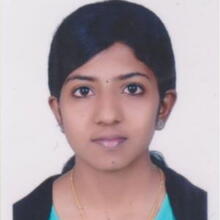
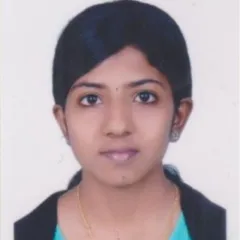
Gopika Hariharan, a Mechanical Engineering graduate, works as a CAE Engineer in Tata Consultancy Services. She has around three years of experience. She has been part of the Automotive OEM project and has supported various Battery Structural Simulations. She had also been part of capability projects where the problem statements were addressed and had been able to provide solutions that reduced human efforts and brought cost savings.
Reduction of Battery Modeling Cycle Time Using Quadratic Tetrahedral Elements for Cast or Mold Components
With the increased focus on the development of Battery Electric Vehicles (BEV) by the automotive OEMs, it is the need of the hour to reduce the BEV development cycle time. It is required to design the battery for various operating conditions, manufacturing loading conditions, in-plant, and service loads during the development cycle. At present, Linear Hexahedral elements are used in detailed battery modeling to balance the cross-functional needs from durability load cases, crash load cases, computational time, model size, and limitations from commercial software current rent approach has hugely limited the virtual development cycle as modeling with Linear Hexahedral elements becomes the bottleneck. It demands more than 60% of development cycle time. This paper will explore the feasibility of using the Quadratic Tetrahedral elements for battery finite element modeling and its impact on the overall cycle time to accelerate the virtual development cycle. This is done by comparing the performance of Linear Hexahedral and Quadratic Tetrahedral elements concerning various parameters such as Modal Frequency, Mode shape, Displacement, Stress, and Fatigue life.
A detailed study of comparison between Linear Hexahedral and Quadratic Tetrahedral elements is performed starting with a theoretical problem and analyzed complex battery modules under various loading conditions using SIMULIA Abaqus. It is observed that the Quadratic Tetrahedral with improved surface visualization C3D10I had performed better than the Linear Hexahedral elements in all aspects. Quadratic Tetrahedral elements for battery cast or mold components saved around 70% of modeling time. On the downside, Quadratic Tetrahedral elements increase the output file size, which can be handled with selective output requests.
Co-author: Sridhar MEKA, Jagadeesh BABU, Ravitej KOMMANA, Edwin MATHEW, Vinod REDDY Tata Consultancy Services, India & Faisal SAYEED, Thomas WANG, Harikrishna KETHA, Virendra DEWANGAN, General Motors, North America
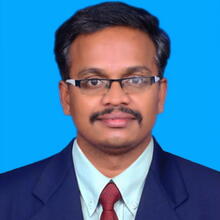
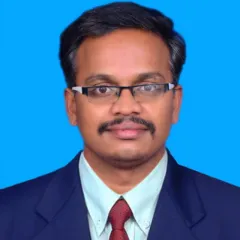
Harikrishnan JALAPATHY started his career with Tata Consultancy Services in 2009. Currently, he is Technical Lead working for automotive industry. In his current role, he interacts with globally acclaimed automotive OEM and works with them for various technical requirements which can be addressed using SIMULIA products. He has Masters Degree in Engineering Design from CEG, Anna University, Chennai. His focus areas are Durability, Sealing, and Optimization on Battery, Powertrain, Drive Unit components.
Edge Bonded Carrier Gasket DOE & Parametric Design Optimization using I-Sight
An edge-bonded carrier gasket (Bonded Seal or Dowty washer) is a type of gasket used to seal two surfaces together to prevent leakage in various industrial applications, such as in pipelines, pumps, and engines.
This gasket is composed of a flexible material, such as rubber or silicone, which is bonded to a metal carrier or core along its edges. The metal carrier provides structural support and stability to the gasket, while the flexible material provides a seal between the two surfaces it is placed between. Overstrain will be a problem when designing the gasket at MMC (Max. Material Condition), and Contact Pressure and Contact Width may also be problems at LMC (Least Material Condition). Finding a balanced design that satisfies the requirements under both scenarios is a difficult undertaking.
The effect of geometric parameters on the sealing behaviour of a carrier gasket is examined in this study. FEA model generated from ABAQUS/CAE was used in conjunction with a powerful tool I-sight to perform a parametric study, where the impact of each design parameter on the gasket's performance was evaluated. Once the key design parameters have been identified, optimization techniques are used to determine the optimal values for each parameter. The goal of the optimization process is to find the set of design parameters that results in a gasket with the best possible performance for the given application.
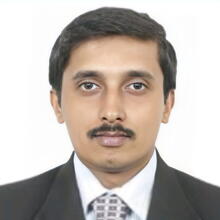
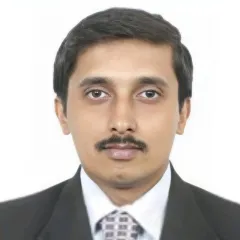
Ramachandra K N has 20 years of industry experience, started his career with Avasarala Automation Limited in 1999 as Project Engineer. Later he joined Cummins India Ltd and worked for four years in Research and Development Applied Mechanics as Executive Manager. He joined Tata Consultancy Services Ltd in the year 2008, working for a Global Automotive OEM as Delivery Manager in his current role and works with them for various technical requirements which can be addressed using SIMULIA products. He has a Master's Degree in Machine Design from BMS College of Engineering, Bangalore. His focus areas are Optimization, Automation, and Durability Analysis.
Tosca Shape Optimization to Improve Durability Of Automotive Engine And Drive Unit Casting Components
This paper aims to present the application of shape optimization to improve the design at critical locations on multiple components of automotive engines and drive units for electric vehicles.
Engine and drive unit castings require fatigue analysis to evaluate the durability for validation of the design. Many time-consuming design iterations may be needed to improve the design at geometrically sensitive locations of the component before arriving at a solution.
The author used the Tosca Shape Controller algorithm to solve the problem in multiple projects at various fillets and undercuts. Tosca software coupled with Abaqus and fe-safe helped achieve counter-intuitive solutions to complex issues. Shape optimization using Tosca has helped to reduce the design cycle time.
Keywords: Engine casting components, Drive unit, TOSCA, Shape Optimization, Counter intuitive design
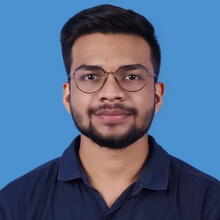

Yash Mittal started his career as a mechanical engineer at Vikram Sarabhai Space Center, Trivandrum in 2019. Currently he is working as a structural engineer, responsible for the design and realization of launch vehicle structures. He has obtained his Integrated Dual Degree in Mechanical Engineering from Indian Institute of Technology (BHU), Varanasi, in the year 2019. His field of interests include Structural design and analysis, fracture mechanics.
Co-author: Arun Kumar S, Beena AP
Transient Analysis and Experimental Investigation of Bellow Separation System of a Launch Vehicle
This paper presents the analysis and experimental investigation of a bellow separation system of a launch vehicle. Transient analysis of the bellow separation system is carried out by non-linear dynamic implicit analysis using Abaqus 2019. Transient analysis revealed that the response of the separation system for both test and flight configuration is different. Test setup configuration is modified, and linear & non-linear transient analysis was carried out for the revised configuration. It has given enough confidence to proceed with the qualification program. Structural response of the system under separation event was captured using strain gauges. The test results are in good agreement with the finite element analysis results. It is noted that Non-linear dynamic implicit analysis gives better strain prediction for separation system transients.
Keywords: Launch vehicle, bellow separation system, transient analysis, strain measurement.
Co-author: Arun Kumar S, Beena AP
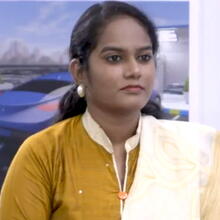
With a Bachelor’s degree in aeronautical engineering from Anna University, Chennai India, and a master’s degree in aerospace engineering from the University of Cincinnati, Cincinnati, Ohio, US, Emlin Mercy Vathsalan is currently driving innovation as an industry process consultant specialist at Dassault Systemes. Having started off her career as an engineering trainee at Taneja Aerospace & Aviation Ltd, Emlin was exposed to the fundamentals of runway construction, air traffic control & the working of ILS. She quickly progressed from being a flight testing trainee at the Indian Institute of Technology, Kanpur to a technical illustrator with CDG, a Boeing Company where she illustrated airplane design, component maintenance manuals, and service bulletins amongst other endeavors.
Emlin then worked on designing & delivering optimized pod shapes with compressible flow simulations on different turbulence models for the SPACE X International Pod Design Contest. She explored her passion for application engineering with Exa Corporation before joining Dassault Systèmes as a CFD Solution Consultant & is currently driving innovative design & simulation solutions as a worldwide SIMULIA Fluids, Industry process consultant Specialist.
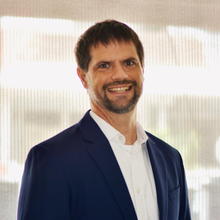

Klaus KROHNE received his Diploma in Electrical Engineering from the Darmstadt University of Technology, Germany in 2002 and his Doctor of Sciences from the Swiss Federal Institute of Technology (ETH) in Zurich, Switzerland in 2007. From 2007 to 2009 he was a Researcher with the A*Star Institute of High-Performance Computing in Singapore. His research interest is in the area of electromagnetic simulation and component optimization techniques. In 2009 he joined CST (Computer Simulation Technology) South East Asia Pte Ltd in Singapore, which was acquired by DASSAULT SYSTEMES in 2016. Today Klaus is responsible for the SIMULIA sales and technical sales in the Asia Pacific.
SIMULIA Brand Update & Highlight
SIMULIA is a Simulation brand within Dassault Systèmes, the 3DEXPERIENCE company. We provide technology for simulation in each domain – covering Structures, Fluids, Electromagnetics, Multibody, Vibro-acoustics, and Automation & Optimization. This presentation offers a brief overview of these technologies and illustrates that you are using the same technology (per domain) whether you are a standalone product user or are a 3DEXPERIENCE platform user. We then highlight multidisciplinary and multiscale solutions of select industry processes and workflows. We also introduce a new unified licensing model that provides access to all solvers from the same license pool. The new model includes a cost-effective approach to encourage simulation-based design exploration. The presentation concludes with a peek into the remainder of the RUM agenda, including deep-dive sessions in each domain.
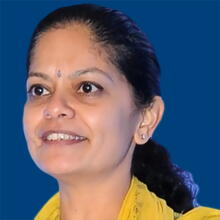

Renuka SRINIVASAN is currently SIMULIA Sales Director for India. In her current role, she is responsible for the SIMULIA business in India. Prior to this, she was WW Services Director for SIMULIA. Renuka has over twenty years of experience in the simulation business and was instrumental in setting up the SIMULIA business in India. She was worked with customers across a variety of industries including automotive, aerospace and defense, industrial equipment manufacturers, civil engineering, engineering services providers, among others. She was a Bachelors's in Civil Engineering from BITS, Pilani, and a Masters's from Duke University.
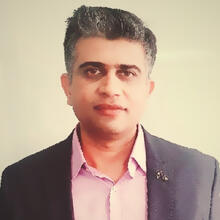
Shripad TOKEKAR has been working with Dassault Systemes for close to 13 years. Over the decade-plus career in Dassault, Shripad has been working with various customers across industries to deploy industry best processes for simulation. He started a career as an applications engineer providing technical support, training, and services and further closely worked with Automotive Industry to develop best practices, workflows & methodologies.
In his current role as an Industry Process consultant manager, he is leading a team of experts from various domains such as Structures, fluids, EMAG, MBS & Optimization. Shripad has a keen interest in understanding the Industry processes and deploys the best practices.
He has a Master’s Degree (MTech) from IIT Delhi in Applied Mechanics with a specialization in structural mechanics.
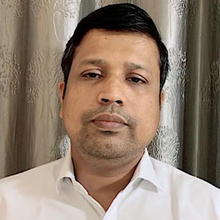
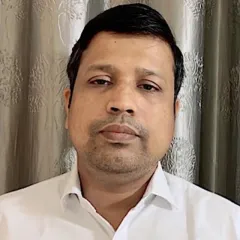
Dayanidhi has been a part of SIMULIA for the past 12 years. He is part of the industry team and his areas of technical expertise include SIMULIA on 3DEXPERIENCE Platform, Composites, Optimization, and Multi-Body Simulation. He has worked for various T&M and A&D clients such as Bombardier, Tenneco, L&T, Ashok Leyland, Mahindra, TATA, HERO Motor, HONDA, ISRO, Airbus, CSIR, DRDO Labs, etc. He holds Bachelors's Degree in Mechanical Engineering and Masters's in Thermal Engineering.
SIMULIA on 3DExperience Cloud for Realistic Simulation
Presentation on the latest roles and functionality on 3DEXPERIENCE Cloud from SIMULIA. It will update What’s New in R2022X GA & FD01 and What to Sell in 2022, complemented by practical demonstrations using focused use cases. This includes a walkthrough of the latest release of PowerFLOW on 3DEXPERIENCE Cloud.
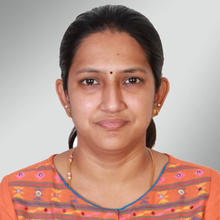
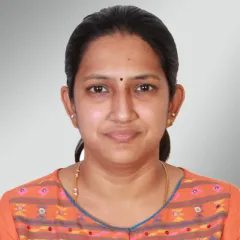
Jofeetha is a member of the Center for Simulation Excellence (CSE), working as a Technical Specialist for Dassault Systèmes, India. She has close to five years of experience in the simulation domain in the fields of solid and structural mechanics. She has a master’s degree in Structural Engineering from IIT, Kharagpur, and a Bachelor’s degree from PSG College of Technology. In her current role, she regularly interacts with customers providing them support on SIMULIA products. In addition to this, she is also involved in conducting trainings and executing benchmarks. Her focus areas are Geomechanics, Process Automation and Nonlinear Structural Analysis.
Structures Update
This presentation will focus on recent Abaqus enhancements related to contact, materials, analysis procedures, and high-performance computing (HPC). New capabilities for modeling and results visualization will also be discussed.

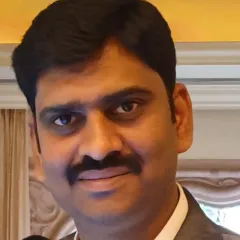
Sureshkumar is an Industry Process Consultant with the Customer Process Experience team at Dassault Systemes India Pvt Ltd. He joined SIMULIA in Aug 2008. His domains of expertise include Process Automation and Customization, Fatigue Simulation, Advanced Dynamic Analysis, Tire Analysis, Automotive Engine, and Powertrain Durability. He works with clients across various industries including Life Science, Transportation and Mobility, Tire, and Industrial Equipment segments. Prior to joining DS, he worked with Robert Bosch Engineering and Business Services Pvt Ltd for two years. Sureshkumar has completed B.E. in Mechanical Engineering from Anna University and Computational Engineering from the School of Advanced Engineering and Information Technology.
Integrated Modeling and Simulation for People, Processes and Performance
This talk covers the different levels of MODSIM - starting with modeling and simulation automation, managing physical and virtual tests, discussing process automation, managing requirements, and finally, performing project management. We have taken an example of designing a smartphone from the Hi-Tech Industry to discuss MODSIM. We have also covered some industry examples where we have deployed MODSIM.
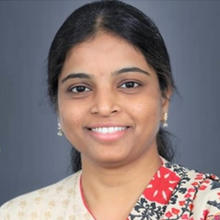

Geetha AVULA started her career with Dassault Systèmes in 2004 and has been with the company since then. She started as an Applications Engineer and is now the Senior Technical Manager. As a support engineer she has provided technical training and support for SIMULIA products primarily Abaqus. She has interacted with many customers giving them guidelines on the issues they are facing, suggestions on their workflows etc. In her current role, she’s responsible for driving initiatives such as Electric Vehicles, Additive Manufacturing, Cloud solutions, to be able to guide companies on the technology Dassault Systèmes has to offer. Interacting with many Electric Vehicles companies in India and working with the global team she is supporting quite a few clients in the EV space. She holds a Masters Degree in Computational Mechanics of Materials and Structures from University of Stuttgart, Germany.
Integrated EV Development from Concept to Certification
3DEXPERIENCE provides an integrated environment to develop electric vehicles from concept to certification. Developing a new electric platform requires expertise spanning multiple physics domains including structures, fluids, electromagnetism and beyond. SIMULIA IPEs can help OEMs deliver higher performing, more durable, stylish vehicles faster. This talk will show how the 3DEXPERIENCE platform integrates the entire EV development process from early concept development all the way through detailed engineering and product launch. Highlights include:
- E-drive development
- Concept body structural engineering
- Faster detailed structural design & verification
- Vehicle styling and emissions certification
The 3DEXPERIENCE platform empowers multi-physics simulation as well as coordination across OEM departments to improve the quality and speed of developing electric vehicles through all stages of product development.
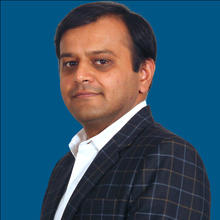
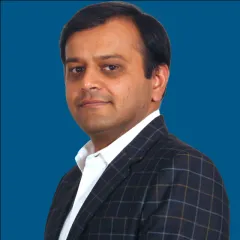
Dhiraj NAHAR graduated in Mechanical Engineering and has been working with DASSAULT SYSTEMES since 2003. He has 17 years of experience in CAD & CAE. At DASSAULT SYSTEMES SIMULIA, Dhiraj has worked in multiple roles such as Customer Support Engineer, Quality Assurance, Software Development, Product Management. In all these years he has worked on developing CAD and simulation tools in our products and has worked with several key customers and strategic partnerships.
Since the beginning of 2019, Dhiraj has been leading a WW team of design & simulation engineers who are responsible to create multi-physics industrial solutions using the DASSAULT SYSTEMES 3DEXPERIENCE Platform. Along with his team, he works closely with our WW customers, understands their requirements and deploys our integrated modelling & simulation solutions in their environments, ultimately leading to substantial productivity gains for our customers.
Integrated EV Development from Concept to Certification
3DEXPERIENCE provides an integrated environment to develop electric vehicles from concept to certification. Developing a new electric platform requires expertise spanning multiple physics domains including structures, fluids, electromagnetism and beyond. SIMULIA IPEs can help OEMs deliver higher performing, more durable, stylish vehicles faster. This talk will show how the 3DEXPERIENCE platform integrates the entire EV development process from early concept development all the way through detailed engineering and product launch. Highlights include:
- E-drive development
- Concept body structural engineering
- Faster detailed structural design & verification
- Vehicle styling and emissions certification
The 3DEXPERIENCE platform empowers multi-physics simulation as well as coordination across OEM departments to improve the quality and speed of developing electric vehicles through all stages of product development.
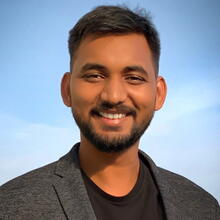

Rohit is leading the technology development in designing the new generation of autonomous helicopters at RangeAero, implementing the modern cutting edge simulation techniques to significantly reduce the design & testing time in aircraft development. Rohit is an alumnus of the Indian Institute of Technology, Patna, and has been deeply engaged in solving controls & navigation problems in robotics.
Presentation Title: Creating Network for Aerial Deliveries Using Uncrewed Automated Helicopters by RangeAero
Along with most other industries undergoing tremendous changes to match the technical advancements, aviation is also expanding its reach in the supply-chain with dedicated freight logistics. To fulfill such growth, RangeAero is introducing modern VTOL aircrafts suitable for short-haul freight aviation. RangeAero's Range series of helicopters offer improved performance and capabilities with added cost-savings. The successful commercialisation of these aircrafts requires modern techniques in development, flight worthiness analysis, and certifications. The techniques utilize frameworks for enhanced simulations, optimized lifecycle performance, and environmental sustainability. The presentation focuses on using modern simulation techniques used in RangeAero's development process, from conceptual design to the flight testing of functional prototypes.


Prajwal leads the engineering team at RangeAero, responsible for aircraft structural design, manufacturing & validations. Prajwal focuses on leading the design & simulations of the complex assemblies for the coaxial rotor system, airframe & landing gear systems. He has been passionately associated with improving mechanical systems through fundamental concepts & analysis.
Creating Network for Aerial Deliveries Using Uncrewed Automated Helicopters by RangeAero
Along with most other industries undergoing tremendous changes to match the technical advancements, aviation is also expanding its reach in the supply-chain with dedicated freight logistics. To fulfill such growth, RangeAero is introducing modern VTOL aircrafts suitable for short-haul freight aviation. RangeAero's Range series of helicopters offer improved performance and capabilities with added cost-savings. The successful commercialisation of these aircrafts requires modern techniques in development, flight worthiness analysis, and certifications. The techniques utilize frameworks for enhanced simulations, optimized lifecycle performance, and environmental sustainability. The presentation focuses on using modern simulation techniques used in RangeAero's development process, from conceptual design to the flight testing of functional prototypes.
